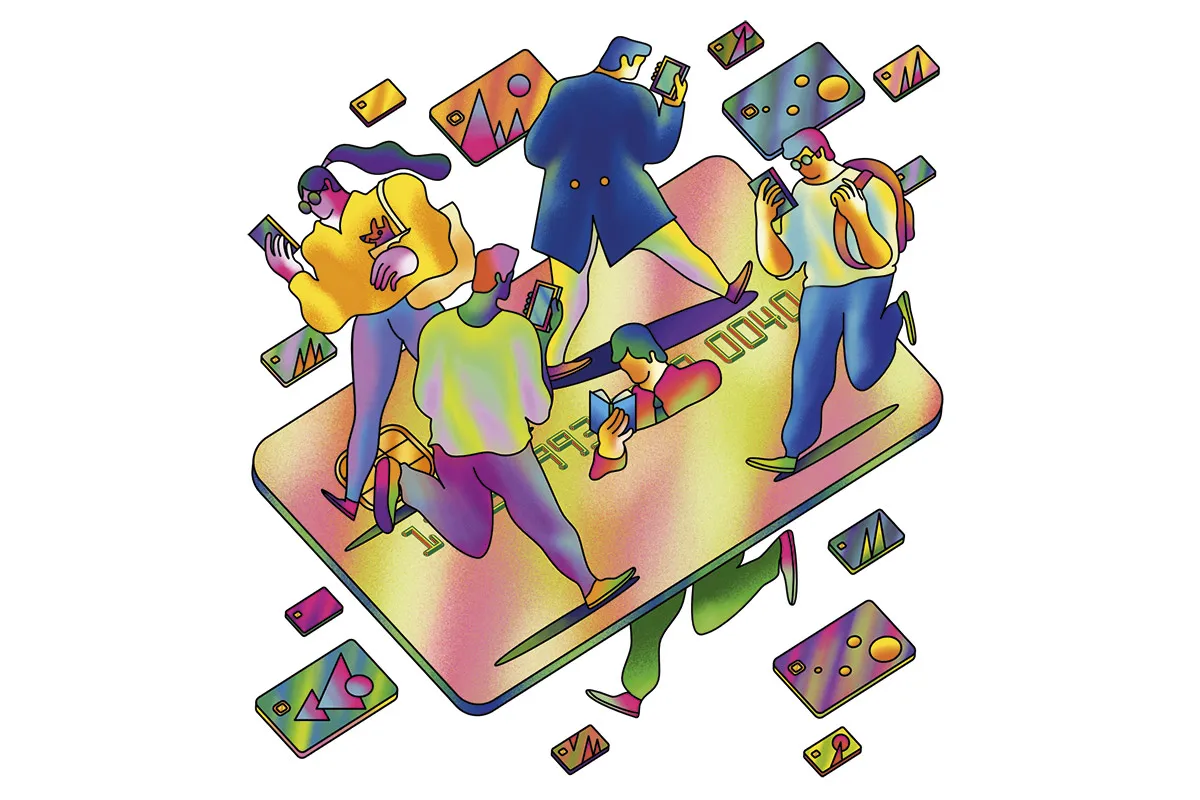"Any change helps,” said the man on the subway, looking around for some charity. Most of us buried our heads into our phones further, pretending that economic disparity was somebody else’s problem. I thought about what was in my bag. My phone, a water bottle, an orange and an empty wallet. Because who carries cash these days? My next thought: I wonder if he takes PayPal?
I got out of the habit of carrying cash when we lived in Los Angeles. Many shops were moving away from using paper money, and it felt totally futuristic to pay for lunch with the tap of my phone. Some of the big chains had already gone completely cashless. As the owner of both a phone and a bank account to link it to, ‘tap and go’ quickly became normal for me and many others. Cash felt somehow subordinate, and weirdly seedy.
The pandemic accelerated a lot of things that have long been predicted by digital advocates: remote working, video conferencing, and making memories in Minecraft. It also accelerated the number of digital transactions that we do.
In March 2020, only 10 per cent of transactions in small businesses were cashless, according to a report from digital payments company Square. That figure jumped to 60 per cent in June 2020. And for restaurants and other service organisations that were already processing 90 per cent of bills on a credit card, tripping into cashless was easy.
Sweden, where only 1.3 per cent of GDP is circulated in cash, announced it was going totally cashless by 2023: no more hard currency transactions! Soon, we would all be liberated from those pesky pieces of metal and paper that have weighed down our pockets for millennia.
The problem is, not everyone has access to a bank account and a mobile phone. One in five Americans were unbanked or under banked in the US in 2020, according to an economic wellbeing report from the Federal Reserve Board. They are predominantly the poor and the elderly, and disproportionately people of colour. They may be people who experience domestic abuse, or who are facing homelessness.

The move to cashlessness has excluded them further, and created even more systemic barriers to overcome in order to participate fully in society. According to a survey from Which?, 1 in 10 people in the UK were refused service in shops for trying to pay with physical currency between March and July 2020. So what happens when you have no alternative?
We have spent the last year facing the edges of the digital optimist’s dream, and now we are correcting course. Sweden has since made conditions for cash to continue, and cities across the US have banned stores from refusing to take legal tender. Meanwhile, in the UK, contactless donation points have been installed on walls in cities that you can ‘tap-to-donate’. The proceeds – more than £250,000 so far – have been distributed to homeless charities.
We need to urgently find more solutions to this divide. Eviction moratoria are expiring, government cheques are drying up and high streets have gone bust. Poverty isn’t going away; and it certainly doesn’t take PayPal.
- This article first appeared inissue 366ofBBC Science Focus Magazine–find out how to subscribe here
Read more from Aleks Krotoski:

